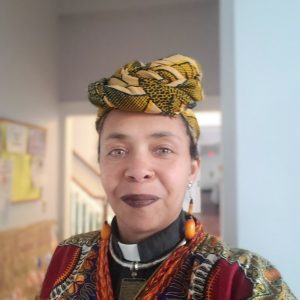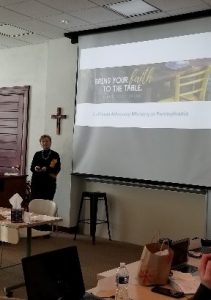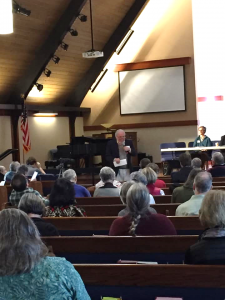
By Kathryn Mary Lohre
At every ecumenical and inter-religious meeting or event I attend, the conversation invariably turns to the rapidly changing ecumenical and inter-religious landscape. At times it is raised as a caution: we cannot continue down the same path because it will no longer lead us to where we thought we were going. At other times, the conversation itself feeds circular thinking: we cannot effectively engage in new ways until we have a clear view of our new context. No one, it seems, has a compelling vision for how we might bridge the gap between the past and the future of ecumenical and inter-religious relations – between the institutions and models that well-suited a different era, and the institutions and models emerging and needed today.
We seem to forget that the ecumenical and inter-religious movements weren’t launched as a strategic response to the demographic landscape, but as feeble-yet-faithful responses to contextual realities that were scandalous to the Gospel, or injurious to the dignity and sacred worth of all people and the planet. Today’s false expectation of 2020 vision has become a major stumbling block to the vitality and urgency of these movements’ work and witness today.
What if we didn’t try to see the whole panorama in clear view? What if, instead, we tried to focus on what we are glimpsing anew, or for the first time, in our own work? When we no longer expect clear vision from ourselves, we are reminded that it is, in fact, God’s vision for unity, justice, and peace. Our work is not to see the whole picture and to construct God’s vision like a jigsaw puzzle, but to invite others through our witness into glimpsing what has already been freely given to us. Our vantage points, our perspectives, are also a gift from God. They aren’t perfect, but they can be used to point to what is.
Let me begin this conversation by sharing with you one area of my work in the ELCA that I am beginning to see more clearly. As a church, we now have a corpus of “Declarations” that serve as ELCA social teaching on “relations.”
These include: “A Declaration of Ecumenical Commitment” (1991); “A Declaration of the ELCA to the Jewish Community” (1994); “A Declaration of the ELCA to People of African Descent” (2019); and “A Declaration of Inter-Religious Commitment” (2019). A fifth, “A Declaration of the ELCA to the Muslim Community,” will soon be underway. Together, they speak volumes about the relations, both within and beyond the ELCA, that are central to our Lutheran self-understanding and Christian vocation.
But these ELCA Declarations are also in dialogue with each other! Let me explain…
Since the Churchwide Assembly last summer, I have been interpreting the implications of the adoption of “A Declaration of Inter-Religious Commitment: A Policy Statement of the Evangelical Lutheran Church in America.” It is exciting to help people understand the contents of the document, to expound upon the historical and theological considerations for our inter-religious life together. It is energizing to share more about the proceedings themselves – the essential deliberation and debate on the floor of the Assembly on key theological concerns, and the spontaneous and moving expression of solidarity by the nearly fifty partners who were present with us. (They joined hands and raised them in the air in response to the Declaration’s adoption.) It is also motivating to explore next steps as we seek to live into the commitments we have set before ourselves, and made to our partners. All of these things are important, and will continue to be in our life together – but they are also deeply linked to other parts of our life as church together.
In July 2019, just one month before the Churchwide Assembly, and in the quadricentennial anniversary year of the transatlantic slave trade, the ELCA Church Council adopted “A Declaration of the ELCA to People of African Descent.” It apologizes to people of African Descent for the church’s complicity in slavery, and its vestiges of racism and white supremacy. It offers confession, repentance, and repudiation of the church’s silence in the face of racial injustice. It was presented publicly at the Churchwide Assembly in August, and the apology was publicly accepted by the African Descent Lutheran Association, with calls for accountability. (Of note, the President of the Association was a member of the Inter-Religious Task Force, the body that developed the inter-religious policy statement, and the presentation of both Declarations took place on the same day.)
I had been in consultation with the drafters of “A Declaration of the ELCA to People of African Descent” during its development. Was the 1994 Declaration to the Jewish Community a model worth considering? What had we learned as a church from a previous confession and repudiation that would bring insight into a different, and differently complex, set of questions? What had been the impact, both immediately and over time? It seemed poignant, not mere coincidence, that the 400th anniversary year of “A Declaration of the ELCA to People of African Descent” was coinciding with the 25th anniversary year of “A Declaration of the ELCA to the Jewish Community.” We have seen over time, and in recent months, that anti-Jewish hatred and racism are two symptoms of the same sin of supremacy.
As a result of seeing the Declarations in dialogue, I have also begun to look for other connections, too.
In 2016 the ELCA Churchwide Assembly acted to repudiate the Doctrine of Discovery, which justified the colonization of Indigenous lands and peoples in this context for centuries. In our inter-religious policy statement, the colonizers’ denial of religious freedom to the indigenous peoples is named explicitly in describing our multi-religious context. The 2016 repudiation is also named explicitly together with the 1994 Declaration of the ELCA to the Jewish Community in Commitment 11 of A Declaration of Inter-Religious Commitment, calling for confession, repentance, and reconciliation with those whom we have caused offense, harm or violence.
In 2017, for the occasion of the 500th anniversary of the Reformation, the Consultative Panel on Lutheran-Jewish Relations developed a “Litany of Confession” based on the 1994 Declaration, which was repurposed again for the 25th anniversary in 2019. In an early public usage of that Litany in 2017, I was approached the late Rev. Dr. Gordon Straw, a leader of and within the ELCA’s American Indian and Alaska Native community. He expressed hurt over the language in the 1994 Declaration that reads: “In the long history of Christianity there exists no more tragic development than the treatment accorded the Jewish people on the part of Christian believers.” What about the treatment accorded indigenous peoples? The language in the opening paragraph of the Litany was adjusted accordingly to reflect our acknowledgement that the suffering of the Jewish people in the name of Christianity is shocking and tragic, without weighting it as more or less tragic than another development right here in our own context. We can and should do better.
Lastly, I am interested in thinking about how the broader culture is calling us into conversation, advocacy, and action on the basis of our Declarations.
Consider the pernicious rise in recent years of the transnational white supremacist movement, and its undeniable links to the rise of anti-Jewish and anti-Muslim violence and discrimination. The manifestos of many of the white supremacist extremists name influencers that are linked to one another in a tangled web of hatred, racism, and religious bigotry. Whether we are speaking of Charleston, Charlottesville, Christchurch, or Tree of Life, it doesn’t take much to connect the dots from the shooters or organizers to those who are appropriating, again, the legacy of Christian anti-Judaic teachings. The 1994 Declaration needs to be reckoned with – by the ELCA, and with our Jewish partners – in light of these most recent manifestations of anti-Jewish hatred. The development of “A Declaration of the ELCA to the Muslim Community,” and our church’s relations with Muslims, needs to take these things into consideration. There is much work to do.
In 2020, my perspective has shifted. I can see how each of the ELCA Declarations stands alongside the others – as complimentary to, consistent with, and conditional upon them. Together, they answer questions about how and why we relate to people – both within and beyond our Lutheran family. They also confess where we have fallen short of the glory of God, violating the body of Christ, and harming or violating the dignity of our neighbors. But they don’t stop there. They remind us of God’s whole, healing, and hopeful vision for our common future. They give us glimpses of Divine beauty amidst the horrors of human sin. They are, by design, and by God’s grace – in conversation with one another. Just as we are.
What of God’s vision are you glimpsing more clearly?

Kathryn Mary Lohre serves as an Assistant to the Presiding Bishop
and is the Executive for Ecumenical & Inter-Religious Relations and Theological Discernment for the ELCA




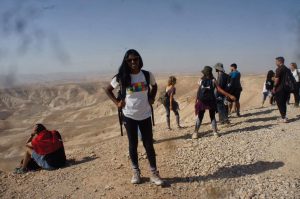
 Hannah Wright Osborn (She/Her/Hers) is a living Lutheran currently residing in the DC Metro Synod where faith and politics are ever present. Her studies in college helped her to understand the value of the farm she grew up on and the recycling of second-hand products. Her year in Palestine further fueled her passion for social justice work. She came back and was invited to lead a trip back to Palestine for other Young Adults of Color near and within the church and to give them space to lead in a white and marginalized society. She has returned back after a successful trip in January 2020 and continues social justice work in her local community through Luther Place Memorial Church.
Hannah Wright Osborn (She/Her/Hers) is a living Lutheran currently residing in the DC Metro Synod where faith and politics are ever present. Her studies in college helped her to understand the value of the farm she grew up on and the recycling of second-hand products. Her year in Palestine further fueled her passion for social justice work. She came back and was invited to lead a trip back to Palestine for other Young Adults of Color near and within the church and to give them space to lead in a white and marginalized society. She has returned back after a successful trip in January 2020 and continues social justice work in her local community through Luther Place Memorial Church.

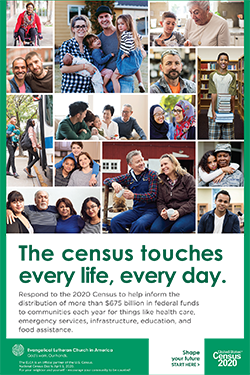









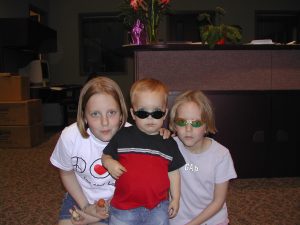

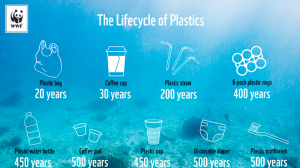
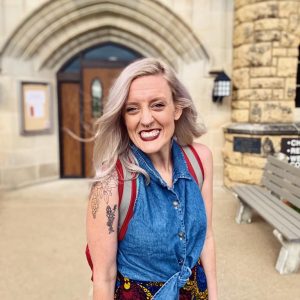 Savanna Sullivan (she/her/hers) serves as the Program Director for ELCA Young Adult Ministries at the ELCA Churchwide Office in Chicago, IL. She was a main stage speaker at the 2018 ELCA Youth Gathering in Houston, TX and gives presentations around the country to ELCA and ecumenical groups about Young Adult culture and empowerment in the church. She is passionate about helping young people seek the Divine in themselves and pushing the church to equip, amplify, and respect the voices of young leaders. She loves banana pudding, the Clemson tigers, and memorizing poems.
Savanna Sullivan (she/her/hers) serves as the Program Director for ELCA Young Adult Ministries at the ELCA Churchwide Office in Chicago, IL. She was a main stage speaker at the 2018 ELCA Youth Gathering in Houston, TX and gives presentations around the country to ELCA and ecumenical groups about Young Adult culture and empowerment in the church. She is passionate about helping young people seek the Divine in themselves and pushing the church to equip, amplify, and respect the voices of young leaders. She loves banana pudding, the Clemson tigers, and memorizing poems.